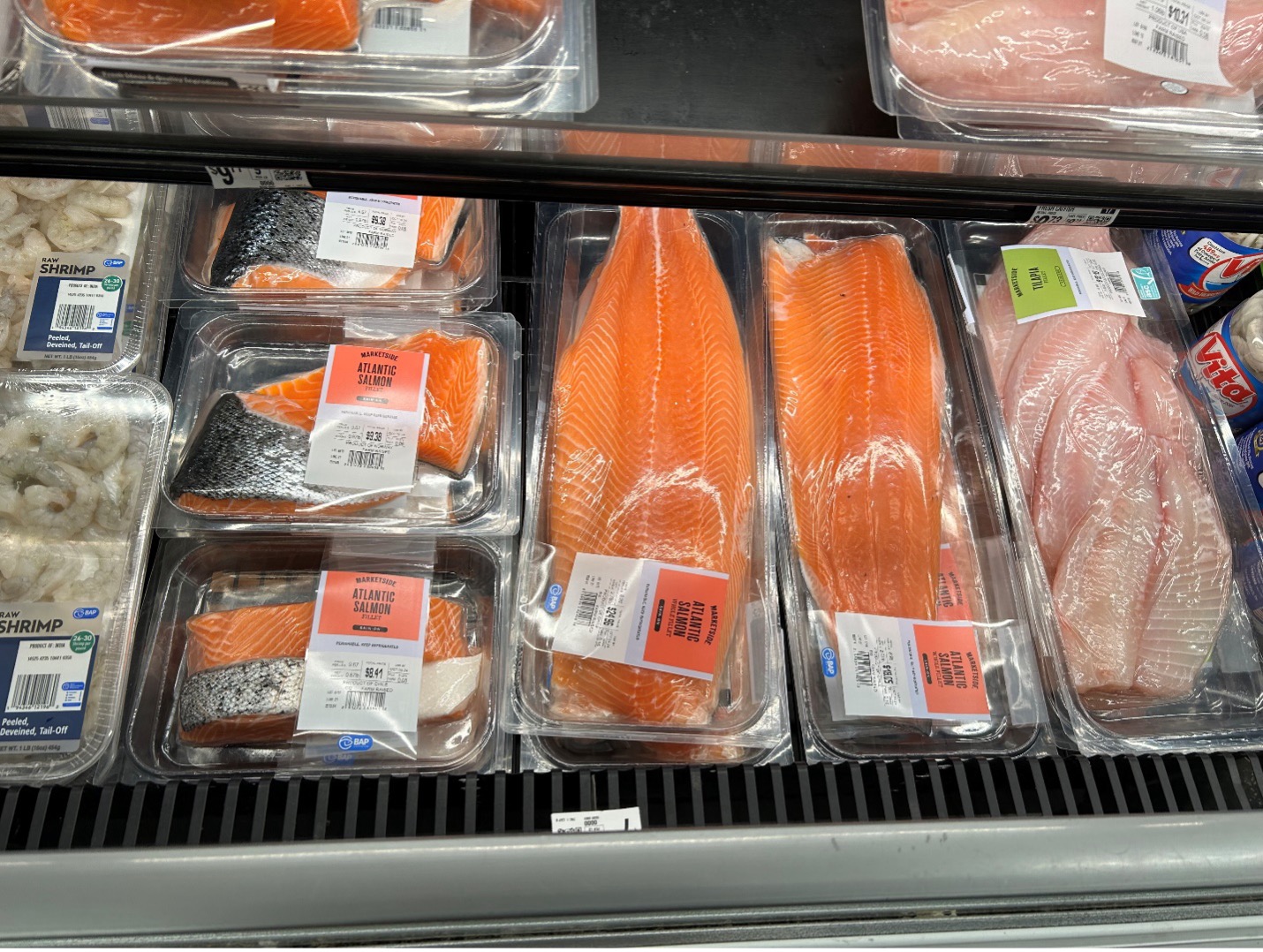Salmon Farms
Contact
University of Arkansas System Division of Agriculture
Cooperative Extension Service
2301 S. University Ave.
Little Rock, AR 72204

Salmon Farms
Driving through British Columbia this summer we spotted signs pointing to “Smoked Salmon.” Stopping to investigate, we found small businesses not unlike the small processing plants that process deer meat in rural parts of Arkansas. A friendly First Nations lady offered us a taste test of the eight different smoked salmon they offered for sale.
During the little sampling, she told us she preferred the traditionally smoked Atlantic salmon because it was so moist and juicy. We agreed and that is what we bought, only later realizing we should have bought more. I quizzed her about Atlantic salmon being available in the Pacific Northwest, where five different species of wild salmon are found. She said, “Oh they are farm fish. We have one farmer just a few miles away.”
We didn’t get the chance to visit a floating salmon farm on our trip, but I flew over several on previous visits to the area. Their layout reminded me of floating chicken houses, except they were round instead of rectangular, and the fish are contained in giant floating nets. A wild salmon spends five years at sea before it reaches maturity, whereas a well-fed farmed salmon does it in about half the time. And they are plumped up with all that healthy fish oil, at least compared to the lean and trim wild fish that live on the rations found in nature.
Fish farming is nothing new. Earlier this spring we inspected fish farms maintained by Hawaiian islanders over 800 years ago. The technique for rearing salmon fingerlings for stocking European rivers was well understood two centuries ago, but it was not until the early 1980s that commercial salmon farming took off. Norway, Chile and British Columbia are the largest producers. Interestingly, wild Atlantic salmon are so rare, it is now illegal to catch them but most of the farm-raised salmon we eat are of that one species.
In 2012, farm-raised fish exceeded the level of wild-caught fish for the first time, and since then the distance between the two sources has widened. Better understanding of fish biology and tighter regulations have kept the wild-caught yield more or less steady but overfishing has depleted some fish stock to non-sustainable numbers. To keep wild-caught fish available, once shunned species are now being substituted for higher-quality types.
Arkansas is no stranger to aquiculture. In the late 1950s, it led the way for the catfish farming industry in the Mississippi River Valley. Today, catfish is the sixth most popular fish on American tables. Shrimp (about 33 percent of total fish consumption), salmon (20 percent), tuna (15 percent), tilapia (10 percent), Alaskan white fish (5 percent), cod and catfish (at about 3 percent each) are the ranked order of fish we eat. Ninety percent of the shrimp we eat are imported, as is the majority of salmon and all the tuna. About 70 percent of the salmon we eat is farm raised.
Aquiculture, like all forms of confinement farming, is not without its critics. If you produce tons of salmon in a series of nets suspended in the ocean, you end up with some of the same problems you have when raising chickens, hogs or beef in confined spaces. All that fish poop is the most often-mentioned concern, but confinement can also lead to disease outbreaks that could spread to the wild population.
One of the newest approaches to salmon farming is to raise the fast-growing, genetically modified salmon produced by a Canadian company called AquAdvantage. Using the Atlantic salmon as the base for modification, researchers in 1989 took the hormone regulating gene from the Pacific Chinook salmon and a promoter sequence from an ocean pout (a fish that looks a bit like an eel but with a kind of antifreeze in its blood that allows it to survive in really cold water) and created a salmon that grew twice as fast as a normal Atlantic salmon. Instead of eating just in the fall and spring, the modified salmon eats year-round, so it grows a lot faster.
The legal and regulatory battles have raged for more than 25 years, but in 2016 Canadian officials approved the modified salmon for sale in that country. In 2020, the final hurdles for sale of genetically modified salmon (the first GMO animal) were cleared in the United States and sales began in 2021. It is these fast-growing salmon that are being raised inland in the United States and Canada. Indoor holding ponds are constructed where the fish are grown. Paired with these ponds are filtering systems that remove the nutrient-rich fish poop that is used to fertilize vegetables being grown in adjacent facilities. It is a new concept, but an interesting approach that some venture capitalists think could make them rich.
Travel is such fun. Without seeing the sign for the smoked salmon, I would have never thought much about fish farming and how it continues to be an important piece of the puzzle for feeding our expanding human population.
